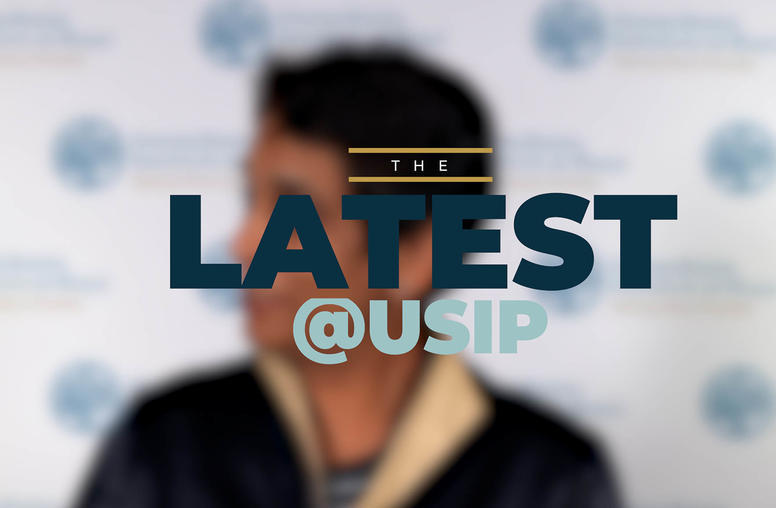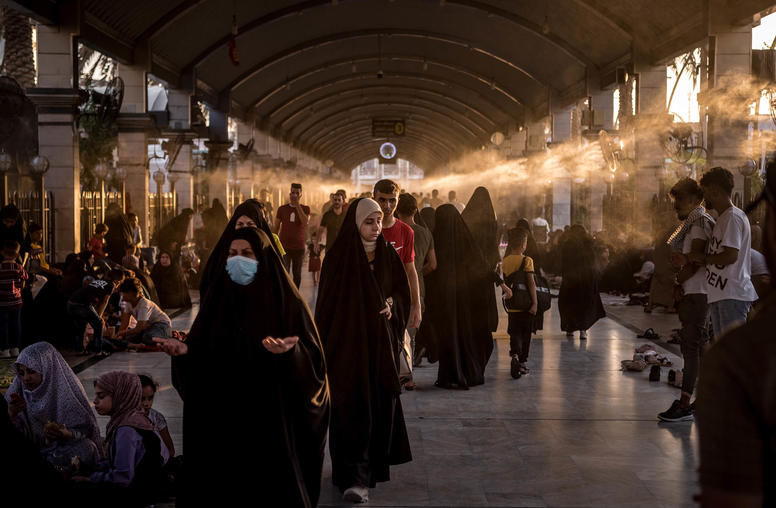The Dangers of Coronavirus in Conflict Zones
With potentially devastating effects in fragile states, what can be done to fortify vulnerable populations?
The health and economic implications of the coronavirus pandemic threaten to reverse decades of development progress. While the international community has mobilized substantial sums of aid and financing to address the pandemic and its impacts, the scale of the crisis demands an even more ambitious response. With the virus’s peak still ahead for many countries, there remains an opportunity to rally support for international collaboration on preventive measures that could stave off the worst-case scenario while addressing underlying sources of fragility.

With so much attention being paid to the severe outbreaks in advanced nations, the issue of coronavirus in fragile and conflict-affected states has gone largely unaddressed. “In the case of acute crisis in the world, these countries need a voice,” said Axel van Trotsenburg, the managing director of operations at the World Bank. “They need to be heard. They need to be seen that they are struggling.”
Raj Kumar, the president and editor-in-chief of Devex, told a USIP-hosted online panel that epidemiology experts warn that the large-scale spread of coronavirus in fragile contexts remains very likely. “The big question is what do we do about that?” said Kumar. “What can the international community do to prepare and reduce human suffering?”
For Sir Mark Lowcock, the U.N. under-secretary-general for humanitarian affairs and emergency relief coordinator, the answer is for the international community to ensure its response rises to the unprecedented scale of the problem: “When you’re in an exceptional situation, what you need is extraordinary measures … And we’re not going to get that on a business as usual mindset.”
‘It’s Not Just the Virus That’s Deadly’
The devastating impacts of coronavirus aren’t limited to public health. “As terrible as this has been in the more developed world … we’re looking at a multi-dimensional devastation in more fragile countries that involves security, economic, and health consequences,” said USIP President and CEO Nancy Lindborg.
Panelists agreed it’s fairly certain the coronavirus pandemic will increase global poverty, undoing years of consistent poverty reduction worldwide. “It took two and a half decades for over a billion people to lift themselves out of poverty, and COVID-19 could push half a billion back in a fraction of that time,” said Lindborg.
According to Lamis Al-Iryani, head of monitoring and evaluation for Yemen’s Social Fund for Development, social distancing measures have damaged the economy and forced many Yemenis out of work, leaving them without an income to afford food and other necessities in the already food-insecure country. “Authorities are asking us to stay home, but they don’t provide us with food rations,” said Al-Iryani. “A common refrain in Yemen has been ‘death from coronavirus infection is possible, but death from hunger is certain.’”
To address this explosion of poverty and hunger, Lowcock said the humanitarian aid system is the “responder of last resort,” and that the goal should be to “reduce the rate at which populations are falling into that category where they won’t survive unless the humanitarian agencies help them.”
International Community’s Response
But how can we reduce the first- and second-order impacts of coronavirus? Trotsenburg made clear the World Bank is doing everything it can to help alleviate suffering in fragile contexts, approving emergency health packages for 60 countries, with another 20 coming in the next couple of weeks. The bank has also restructured the debt of nearly 100 countries—giving governments the financial flexibility to help their country weather the impacts of COVID-19.
Meanwhile, Lowcock noted there has been over $8 trillion in spending to protect the global economy. If the international community were to spend 1 percent of that stimulus—roughly $90 billion—it could protect the world’s poorest 10 percent from falling into a “live or die” humanitarian crisis.
Convincing more developed nations to meet the scale of the crisis isn’t an argument that needs to be won “in terms of human generosity and empathy,” said Lowcock. “This is about self-interest. It’s not just the virus that will travel around the world … there are other consequences of instability,” such as the Syrian refugee crisis that saw a million Syrians enter Europe in 2015.
Trotsenburg said highlighting these far-reaching impacts of instability might help forge international solidarity around this issue, but that there needs to be definitive commitments to provide assistance: “My concern is there will be nice words but not enough real support.”
The Imperative for Addressing Local Priorities
If the international community expands and collaborates on funding measures, the challenge of how to tailor the deployment of aid toward locally appropriate priorities still remains. “It’s not enough to prepare the [humanitarian funding] packages,” said Trotsenburg. “We may be very successful in organizing the money, but at the end of the day, that doesn’t matter if we don’t make a difference on the ground.”
In Yemen, Al-Iryani’s organization is using direct cash transfers to help struggling households afford food. With over 50,000 families already in the program, they aim to add another 50,000 in the coming weeks. Lowcock praised the program and noted that direct cash assistance channeled through social protection systems has proven effective and efficient in the past in places like Somalia.
Also, of consequence for the aid response is targeting vulnerable populations with smart investments. Samuel D. Tweah, Jr., Liberia’s minister of finance and development planning, pointed to his country’s informal economy as an example, noting those workers are often overlooked because of their unofficial nature.
For programs that don’t provide direct relief, such as those than are implemented through government investments, Lindborg says one of the most important pillars for success is transparency: “Without more inclusive, legitimate governance, our development investments are less likely to result in sustained gains.”
Transparency is not just vital for holding governments accountable. “Citizen trust in government is paramount” in combatting rumor and disinformation about the virus, said Lindborg. Minister Tweah noted that transparency has been a priority for Liberia, and the president included opposition leaders at the beginning of their response to COVID-19. “Countries have to turn this crisis into an opportunity to showcase that their systems can work,” said Minister Tweah, “to show that all spending is on budget, that we are fully accounting for resources.”
Applying the Fragility Lens
“We need to think of COVID, but at the same time, we should not lose sight of our longer-term goals,” said Trotsenburg. “These [longer-term] development needs have actually become larger and more urgent.” Instead, Trotsenburg proposed that the response to COVID-19 can be embedded in already existing development plans, such as the World Bank's strategy for fragility, conflict and violence: “The core of our strategy is poverty reduction, and that has become even more relevant than ever.”
Lowcock underscored the importance of early investment in the face of the crisis, saying, “I would be, personally, more aggressive on the front-loading. Partly because I think the price is cheaper if you act earlier. You try and contain the problem within the next one or two years to avoid a 10-year problem.”
But there is a consensus that the old paradigm of separating humanitarian and development strategies is breaking—and that a new approach will need to take its place. “I think COVID is begging us to rethink” things like job creation in fragile states, said Minister Tweah. “What this begs for is an imaginative rethinking of the nexus between the humanitarian, development, and private sectors.”



